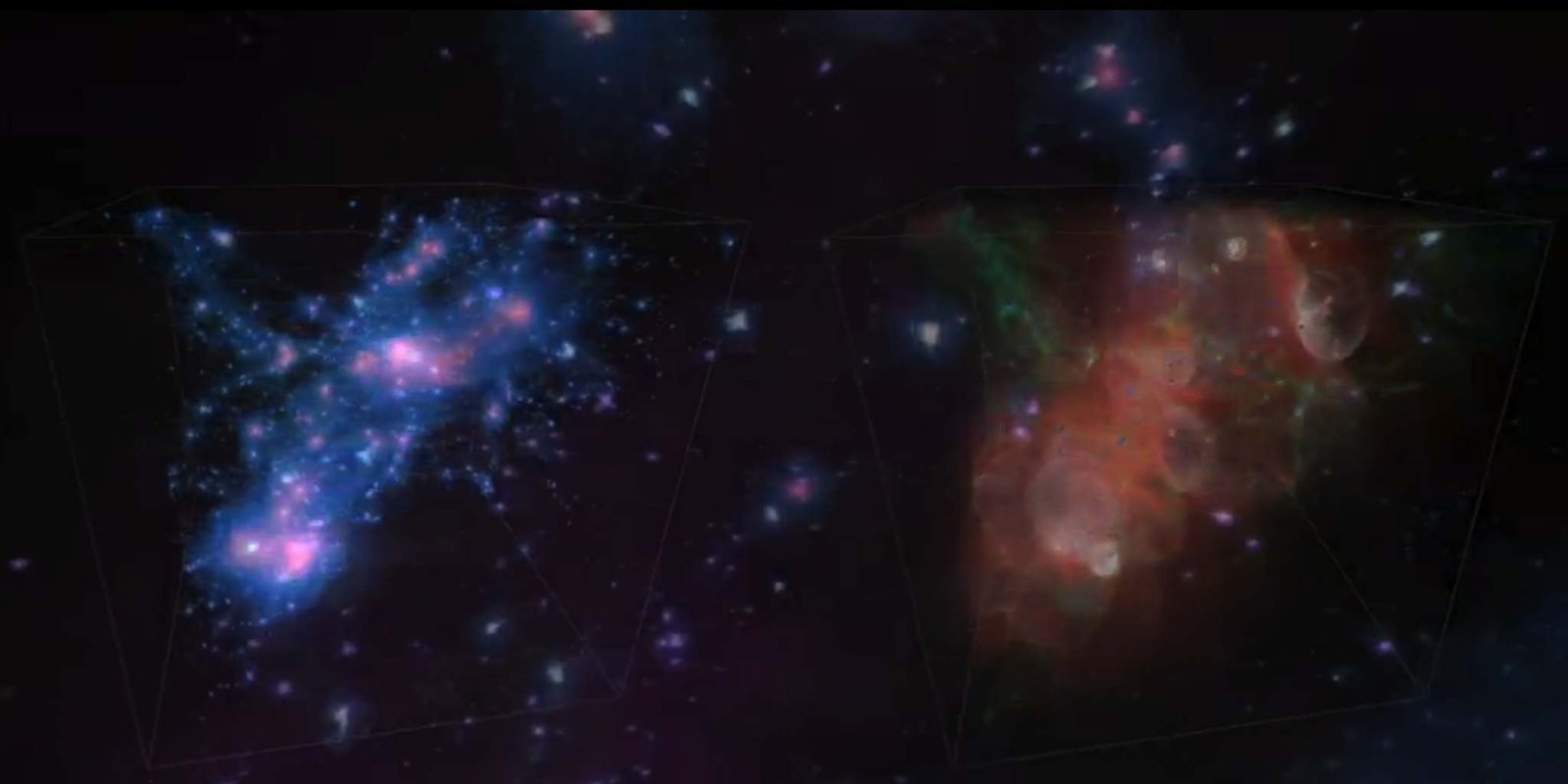BY DENNIS OVERBYE
For centuries people have found meaning — or thought they did — in what they could see in the sky, the shapes of the constellations echoing old myths, the sudden feathery intrusion of comets, the regular dances of the planets, the chains of galaxies, spanning unfathomable distances of time and space.
Since the 1980s, however, astronomers have been forced to confront the possibility that most of the universe is invisible, and that all the glittering chains of galaxies are no more substantial, no more reliable guides to physical reality, than greasepaint on the face of a clown.
The brute mathematical truth is that atoms, the stuff of stars, you and me, make up only 5 percent of the universe by weight. A quarter of it is made of mysterious particles known as dark matter, and the remaining 70 percent a mysterious form of energy called dark energy. Physicists theorize that dark matter could be exotic particles left over from the Big Bang. They don’t know what it is, but they can deduce that dark matter is there by its gravitational effect on the things they can see. If Newton’s laws of gravity held over cosmic distances, huge amounts of more matter than we can see were needed to provide the gravitational glue to keep clusters of galaxies from flying apart, and to keep the stars swirling around in galaxies at high speed.
Cosmologists have theorized that it is in fact dark matter, slowly congealing under its own weight into vast clouds, that provides the scaffolding for stars and galaxies.
Read the full story in the New York Times.
Screengab via NYTimes


